Video exampler: coming soon…
Video tutorial: coming soon…
Recommended prerequisites: none
Description: The kneeling front shoulder roll is ground zero, in my eyes. It’s a great way to get some rotational wits about your brain if you can’t fathom tumbling in any capacity — it will be the easiest to cope with mentally. As a side bonus, it’s also something that comes in handy if you ever plan on leaping off of a tall building after you either murder someone or rob a bank.
Slide by slide breakdown
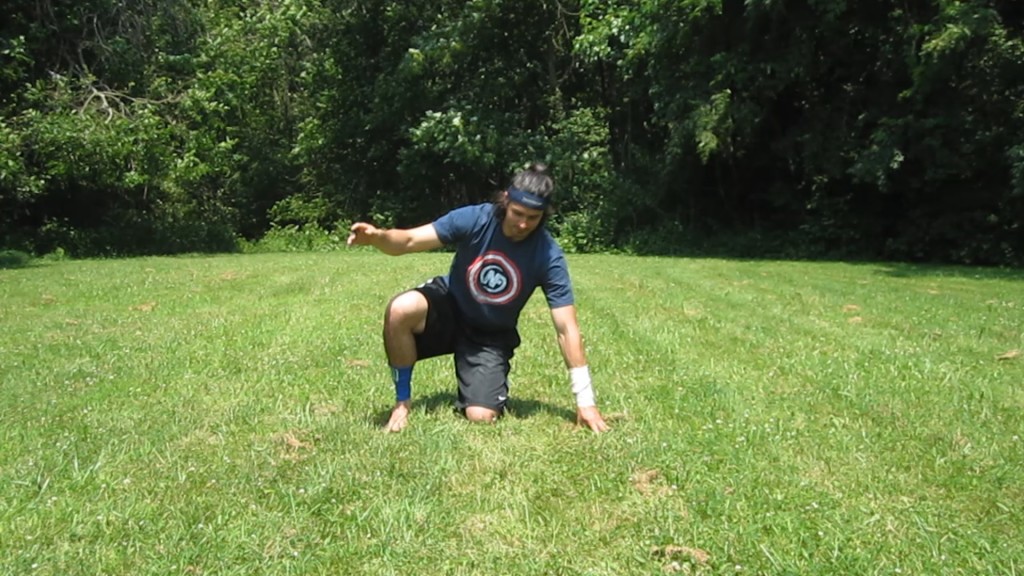
Start in a kneeling lunge position. You should have an idea of what shoulder you’d be more comfortably rolling onto. For me, my dominant arm (right arm) is the free arm, which means the left arm gets planted on the ground with the left knee. When you do this, you create a nice little triangle cavity formed by the arm, armpit, and knee of the grounded side. The free arm? Think of it as a needle. Yes, you’re now knitting.
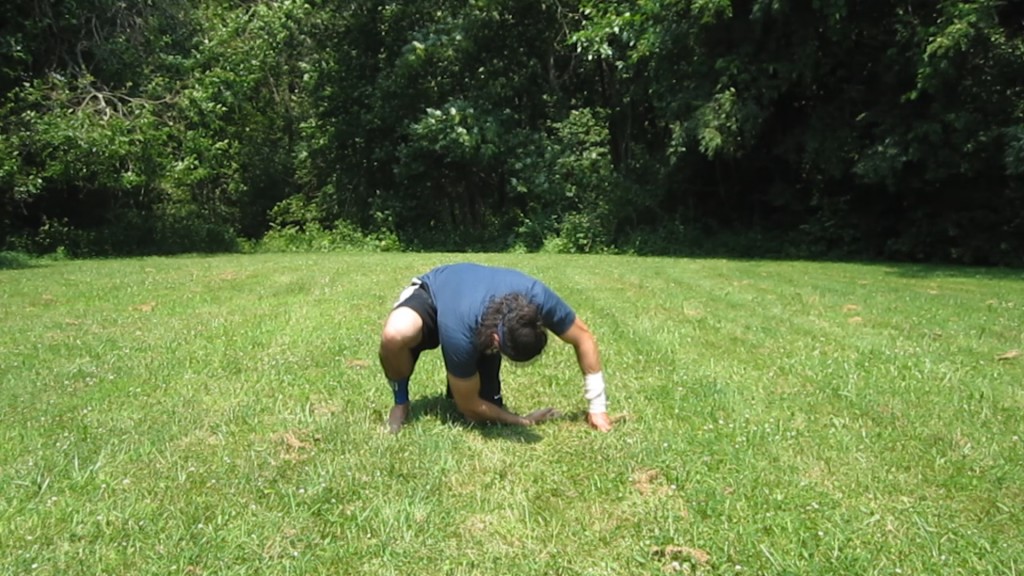
Remember that triangle cavern? Remember the needle? From the starting position, it’s all about threading the needle into the cavern and following it with your eyeballs, so take your free arm and swoop it through the opening created by the knee and arm on the ground.
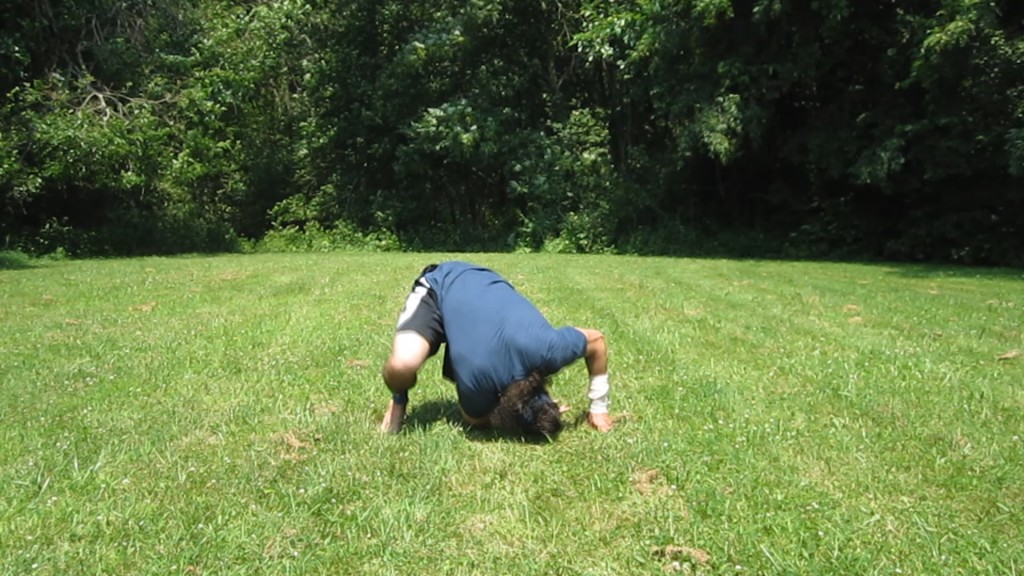
Keep reaching your hand through. As you do this, tuck your chin to your chest and turn your head sideways. If you don’t turn your head sideways, it’ll turn into more of a forward roll. This is fine and something that will happen as you get more comfortable. Turning more to the side = easier. So aim for the ground with your shoulder blade, not your neck.
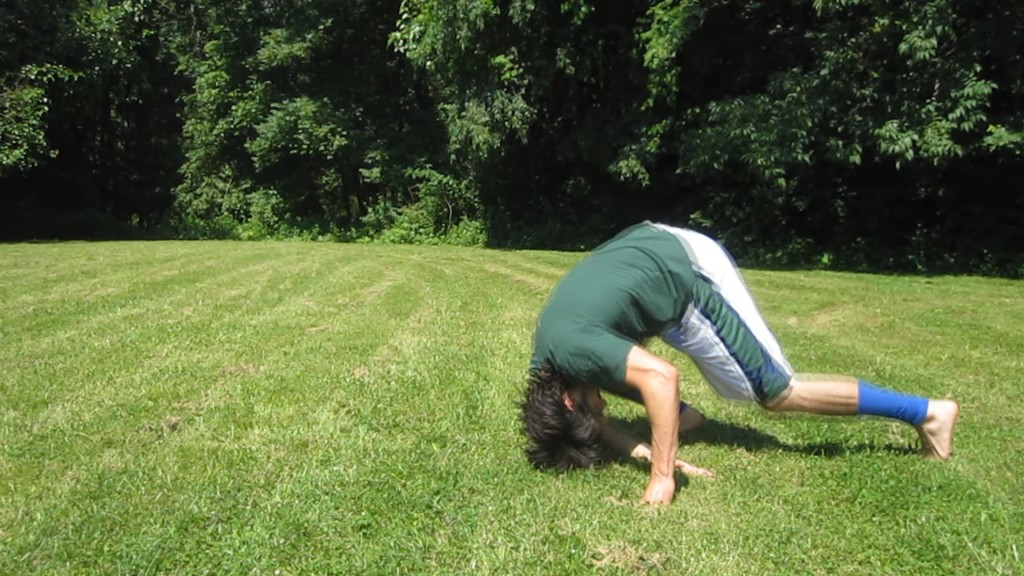
A side view to see the arm looped through the open hole.
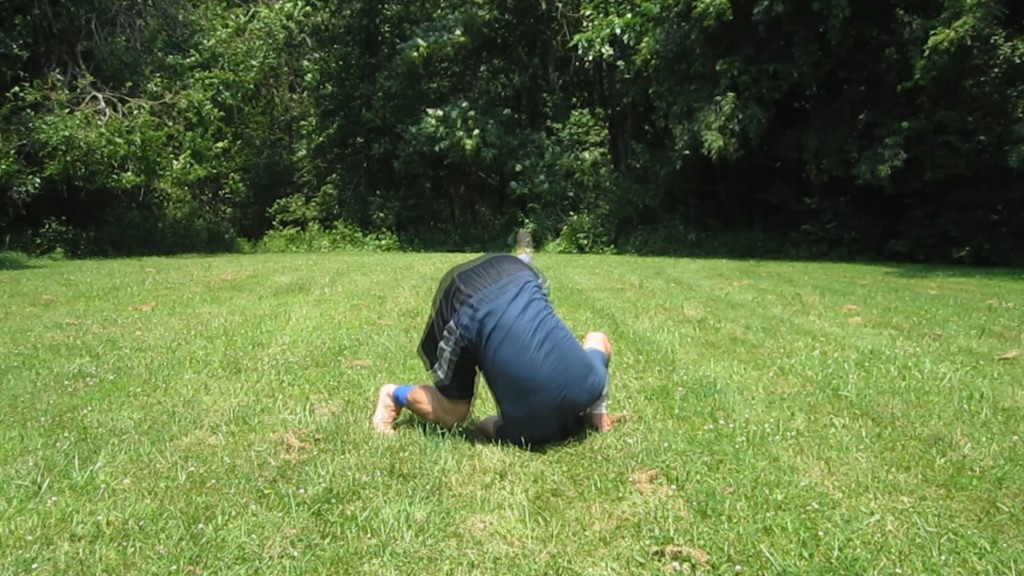
Right shoulder is on the ground. Left shoulder is off the ground. My head was chopped off and my dead body lays alone in the wilderness in an awkward Kama Sutra position. Errrr…my head is completely tucked. Feet are still there too. This is why these rolls are rather harmless—you put your body in a safe position before anything really happens. My lower body is still in contact with the ground, and my head and shoulder are basically resting on the ground. You don’t “jump” into the roll, which makes it an übersafe move as far as necks are concerned.
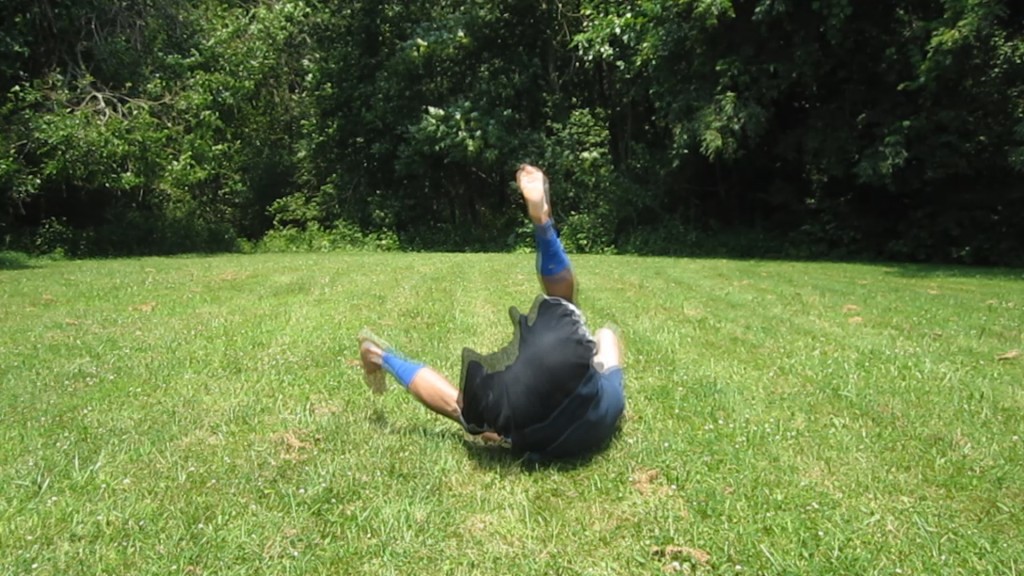
Not much to say here outside of momentum doing it’s thing. The back leg kicks up and over. The leg that’s on the same side as your arm that was planted on the ground leads the way. Think about toppling over rather than rolling aggressively. Get into a good position and then gently lean your momentum forwards.
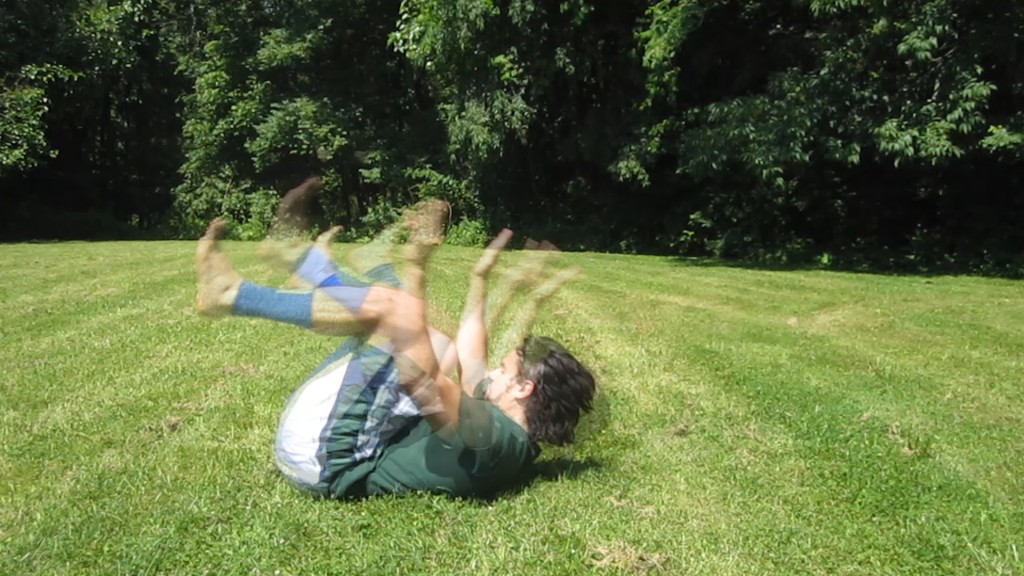
It might seem like I’m having a seizure here, but my knees are actively tucking to me chest to prevent flopping on the ground. I like to roll into the squat rather than to nowhere, so my arms and legs are preparing for this.
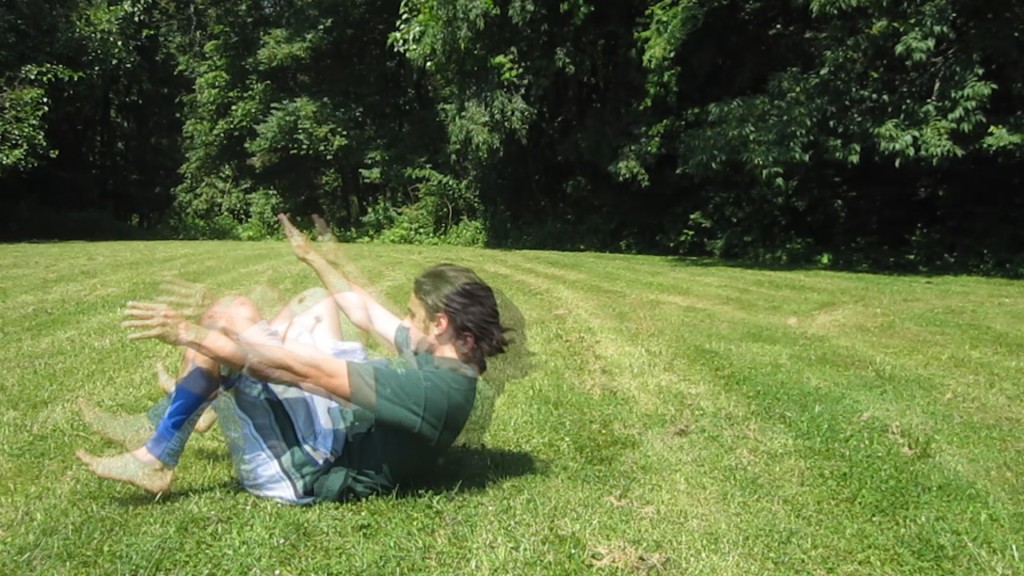
Since I’m trying to carry my momentum forward, I’m reaching forwards after the roll finishes. Reach. If you don’t want to ride it into a squat, well, then just let your body tip over and enjoy the ride.
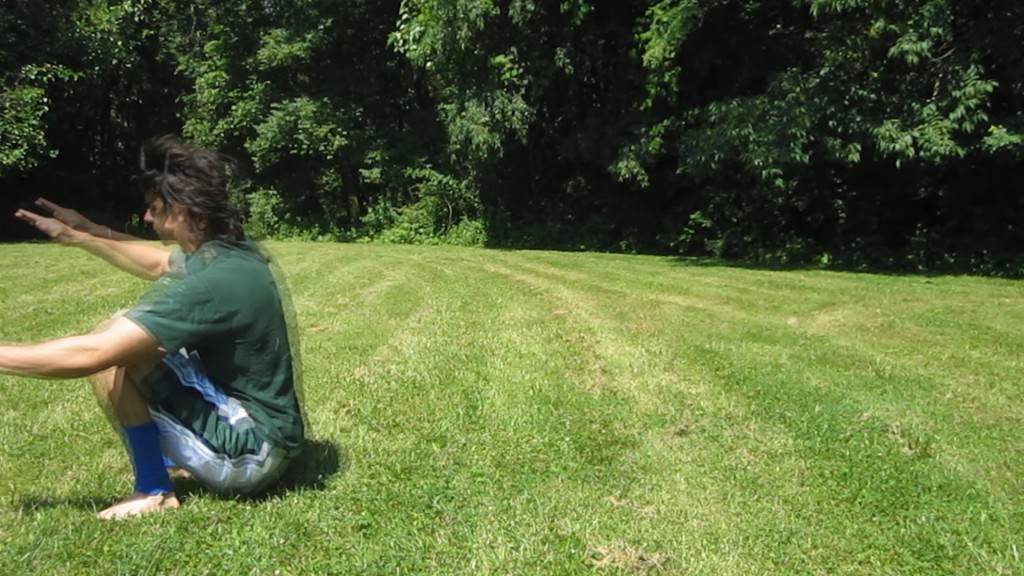
When you tuck the knees, your momentum continues and you land in a seriously deep squat. If you have enough momentum, you can ride it up and pop to a standing position.
Recap cues:
- Loop the thread through the needle hole
- Lead with your shoulder, not the neck
Troubleshooting:
Brain hurt? If you aren’t used to rolling, move into these slowly. Just like if you ride a roller coaster, your brain is looping over itself, trying to make sense of the spinning world around it. You might get a little dizzy or experience some brain fog if you aren’t careful.
Shoulder hurt? You’re probably not easing into the move. Think of having your head and shoulder blade in contact with the ground before you even roll. If you “drop” into the roll, your shoulder blade takes a lot of impact.
Land unraveled with a flat back? Actively tuck your knees to your chest after the roll — stay tight.